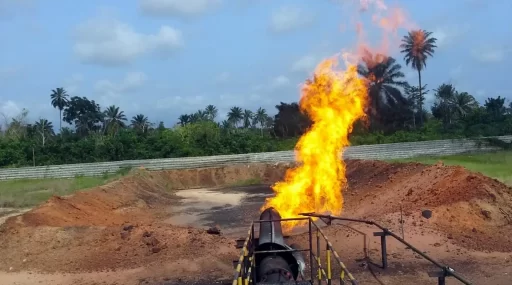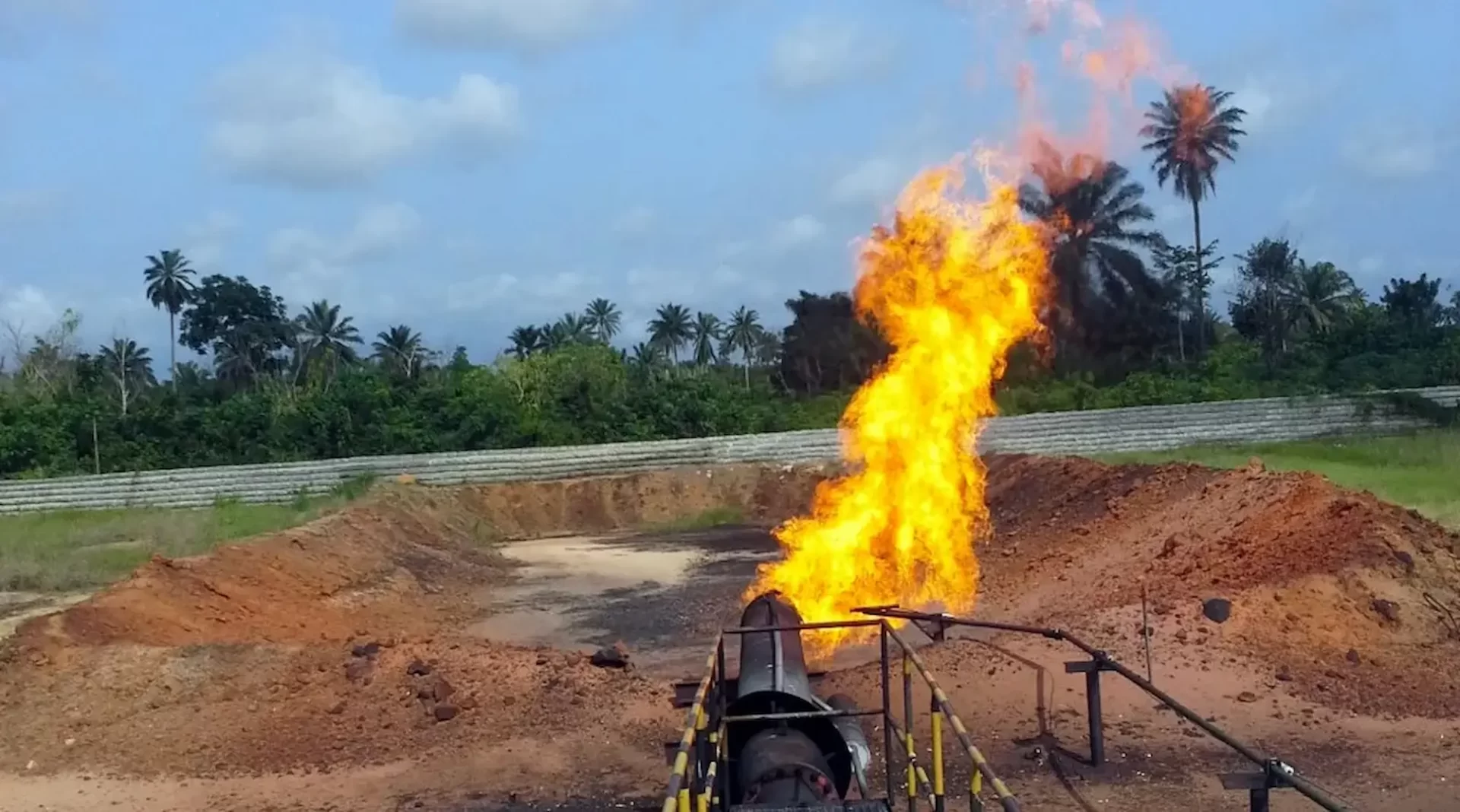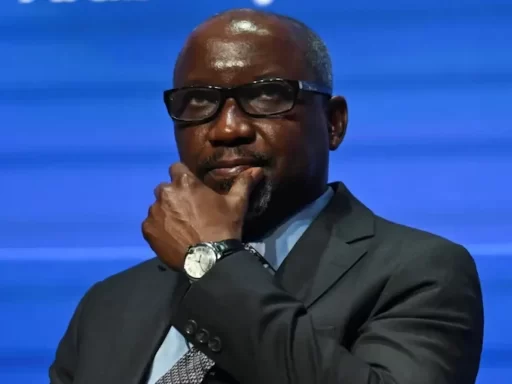Nigeria Records 7.38% Decline in Gas Flaring in July
By NaijaEnquirer Staff
Nigeria’s gas sector recorded progress in July 2025, with flaring levels declining to 7.16 percent, compared to 7.55 percent in 2024 and 7.38 percent in July 2023, according to the Nigerian Upstream Petroleum Regulatory Commission (NUPRC). Daily production also climbed to 7.59 billion standard cubic feet (BSCF), an 8.58 percent year-on-year rise from 2024 and 9.84 percent higher than 2023 output.
Regulatory Drive for Zero-Flare Commitment
NUPRC attributed the milestone to initiatives such as the Nigerian Gas Flare Commercialisation Programme (NGFCP), the Decarbonisation and Sustainability Blueprint, Carbon Capture and Storage (CCS), and the Upstream Petroleum Decarbonisation Template (UPDT).
“This milestone underscores our sustained regulatory drive to ramp up gas production while progressively reducing flaring in line with Nigeria’s 2030 zero-flare commitment. We are proving that production growth and flare reduction can move hand-in-hand,”NUPRC stated.
Improved Domestic Gas Delivery
The Commission reported that Domestic Gas Delivery Obligation (DGDO) compliance stood at 72.5 percent in July, compared to 71.8 percent in June. Contract performance showed Marginal Sole Risk operators contributed 63 percent of output, Production Sharing Contracts (PSCs) 24 percent, Joint Ventures 10 percent, and Sole Risk operators 3 percent.
On utilisation, 35.88 percent of output was exported, 27.82 percent supplied to the domestic market, while 29.13 percent went to field and plant operations. Gas-to-Power supply rose 3.48 percent to 862.86 MMSCF/D, the strongest in three months.
NNPC Highlights Production Growth
Meanwhile, NNPC Ltd. reported overall gas production in July at 194.179 BSCF, a 4.72 percent increase from June’s 185.432 BSCF. Associated Gas made up 58.73 percent, while Non-Associated Gas accounted for 41.27 percent.
Despite progress, gas flaring rose month-on-month, with 11.636 BSCF flared in July (5.99 percent of output), compared to 10.364 BSCF in June.
Nigeria Targets 10 BSCF Daily Output by 2030
Finance Minister and Coordinating Minister of the Economy, Wale Edun, reaffirmed Nigeria’s ambition to reach 10 BSCF daily gas production by 2030. Speaking during a meeting with Nigeria LNG Ltd. (NLNG), Edun said new investment deals, including the Deepwater agreement with TotalEnergies, are strengthening Nigeria’s gas sector outlook.
“Nigeria has set its sights on producing 10 billion standard cubic feet of gas per day by 2030. The President has stabilised the economy and created new opportunities for both manufacturing and energy,”he said.
NLNG Reports Capacity Growth
NLNG’s Managing Director, Dr. Philip Mshelbila, disclosed that the company’s plant capacity utilisation has now risen above 70 percent, citing improved supply reliability and better security along the Trans-Niger pipeline.
“We are seeing positive results in gas supply reliability and in securing critical infrastructure. Our capacity utilisation has climbed above 70 percent, reflecting the resilience of our operations,”Mshelbila said.
The July performance reflects Nigeria’s broader ambition to leverage gas as a transition fuel to strengthen energy security, attract investment, and drive economic growth.







